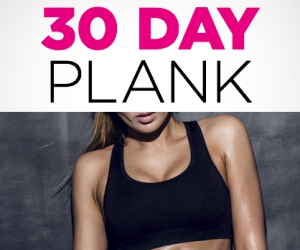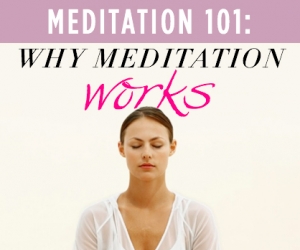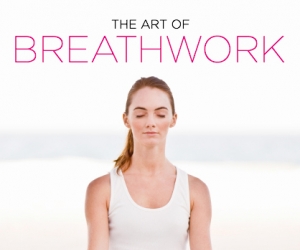Going Basic: 12 Classic Pilates Exercises
Find out more about core moves in this favored workout.
Pilates can be intimidating to newcomers. But there’s nothing to fear. It’s easy to learn classic moves in Pilates and soon you’ll be sweating away with the pros.
Kim Kilway, who has been certified in Pilates and Gyrotonics for more than 20 years, teaches Pilates at The Houstonian Club in Houston, Texas. She shares her information on the top core moves for beginners, along with why they're best and what they do for the body.


According to Kilway, “Pilates teaches you to move from the center, like a dancer, firing up your core and supporting the rest of your body. It will give you a flat belly and the stability and mobility results of a strong core.”
Here are several of her favorite exercises for beginners:
One Leg Circle - clockwise and counterclockwise. Strengthens your abdominals, quads and hip flexors. Stretches your hamstrings, hip extensors and IT band.
Single Straight Leg Stretch - like a scissor, reach, pulse and release. Strengthens your abdominals and stretches your hamstrings and hip flexors.
The Saw - its rewards are plentiful. It strengthens your rectus abdominal, external and internal obliques, and stretches your adductors and hamstrings.

Shannon Barbadian, co-founder of Defy Gravity, a premier Pilates and indoor cycling studio in Corona del Mar, Calif., shares her favorite two moves for beginners:
Bridging - Lay on your back, feet on the floor, knees are bent. Lift your hips to the ceiling and lower hips back to the floor. You are looking to be in control when doing both motions. It's easy to do and it's good for everyone. It targets many body parts at once - the gluteus, the deep abdominals, the hamstrings, and it stretches out the quads. Extra bonus - rise up on your toes like you're wearing high heels and now you're working those calves too.
Planks - Facing the floor on your elbows, with either your toes or knees on the floor. Hold the plank for 10 seconds, rest and repeat eight to 10 times. Plank is fantastic for the core. It's also a great workout for the back and when adding the leg lift, the hamstring and butt get in on the act. These are not easy, but can be accomplished by a beginner. Extra bonus - increase the work, increase the results. On your toes and forearms, bend your knees to the floor and return to plank position. Repeat 12 times. And keep going. Get in plank position, lift one leg at a time off the floor without moving the pelvis.
Stephanie Mansour, owner of Step it Up with Steph in Chicago, Ill., shared her best beginner exercise:
Pelvic Tilting - Lie on the ground, feet as wide as your hips, and inhale as you fill your stomach. Exhale, engage your low abs as if you were zipping into a tight pair of pants, pressing your back onto the ground. You will now be in a tilted position. From here, place the hands behind the head, and slowly pulse up with your head and shoulder blades off of the ground. Repeat 20 times.
Next, release your head onto the floor and lift the legs up towards the ceiling. Exhale and pull your belly button in and press your lower back into the ground. Lower the legs down just a couple of inches, being sure to keep the back pressing into the ground, and then bring the legs back up to starting position. Repeat 10 times.
Tandy Gutierrez , founder of www.pimpyourmat.com in Brooklyn, N.Y., shares her suggestions:
Lower Lifts - Lower Lifts are brilliant because they finally create genuine strength and flattening in the stubborn area between your belly button and your pubic bone. As you learn to connect your lower body with the strength and power of your core, this move literally knits the upper and lower halves of your body together and gets results. Pilates is all about correct form and if you do this one correctly, your body will truly transform.
The Hundred - It trains your transversus abdominals to cinch and knit in tight like your own personal corset. It acts like shrinkwrap on the body. The transversus cannot typically be actively engaged and requires something to set it off balance in order for it to kick in. This uses your own arm pumping to get your transversus to kick on and stay on from the beginning of the workout. It pumps blood and also acts as an efficient warm up. Like Pilates in general it's a sneaky multi-tasker that you will not find in any other movement format.

Sarah Hippert, instructor at Reformation Fitness in Washington, D.C., shares her tips:
Front support (plank) with one leg lifted - you move the lifted leg out to the side for 10 repetitions then make a box shape (out to the side, up, back in, and down, for 10, then reverse for 10. A beginner could always place the knee of the supporting leg down. This exercise is total body - makes the quads, hamstrings, inner/outer thighs, hip flexors burn as well as the length of the rectus abdominus and shoulders.
Bent Knee Teaser - hold for 10 seconds then let the torso come down and back up (a beginner can hold the hamstrings for support) and repeat 5 times. This obviously requires the powerhouse connection - transverse abdominus - deep abdominal engagement.
Corkscrew - laying on back with legs up in the air - either head neck and shoulders are lifted with hands supporting behind the nape of the neck or hands can make a diamond shape underneath the sacrum. While keeping the torso completely still and the hips grounded, the legs make small circles, alternating directions, staying within the frame of the body. It's not about the range of motion or pace of the movement - it's about keeping the torso still, the hips grounded and maintaining the powerhouse connection, with glutes and inner things engaged as well.
Tagged in: exercise, pilates, fitness tips,



